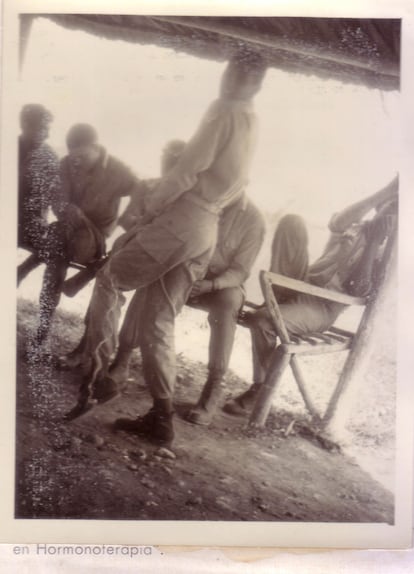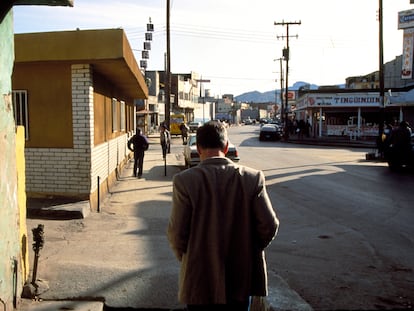History will not absolve you: Shedding light on Cuba’s UMAP correctional camps
Cuba has approved same-sex marriage, an advance in rights that nonetheless does not erase the Castroist repression of diversity in the 1960s

Cuba legalized same-sex marriage in September. In addition to being an advance in rights, it could also be interpreted as an act of historical justice within a regime that locked up homosexuals in its early days. But historical traumas are not healed by merely intervening in the legal structure. The trauma is stored in the memory and that is not where the Cuban state has looked. This trauma is that of the forced labor camps, which operated in the 1960s and 1970s, and whose victims were not only those who desired people of the same sex but also those who, among other sins, loved Jesus or simply wanted to dance the twist.
Looking where the official narrative does not look is the object of critical historiography. As such, while viewing the law passed in Cuba with satisfaction, one can also delve into what happened by reading El cuerpo nunca olvida (or The body never forgets), a study by Abel Sierra Madero that ambitiously analyzes the issue of labor camps, a subject that is often touched upon but remains little investigated. The Cuban academic also conceives memory as a space for justice and considers it urgent to work on it in the face of an institutional “strategy” that promotes “an amnesiac transition, the washing of the national memory and the rewriting of history.”
Madero explains that in 1959, the revolutionaries took power and began to construct the “New Man.” In 1965, Che Guevara wrote that it was necessary to create “a harmonic set of channels, steps, reservoirs and well-oiled apparatuses that make the march possible, that allow the natural selection of those who are destined to march in the vanguard and who dispense rewards and punishments to those who fulfill their duties or act against the society under construction.” The prison experiments were installed with the change of regime but it was precisely in 1965, when Guevara penned Socialism and Man in Cuba, that the Military Units to Aid Production (UMAP) were instituted, the “toughest” part of the system according to Sierra Madero, who lives in the United States. Some 30,000 people passed through the UMAP camps, which served as centers of production and political correction. Among the various forms and degrees of 20th century concentration camps, the historian compares Cuba’s case with that of Franco’s Spain.
Various types of “antisocial elements” were sent to the UMAPs, under the pretext of performing compulsory military service. Homosexuals and religious people predominated. Sierra Madero says that the revolution also served as “a project of national masculinization.” There were units within the system reserved for homosexuals. The image that illustrates this article - taken furtively as photography was prohibited - corresponds to a hormone therapy session. It was provided to the author by a psychologist who worked in the camps, one of Sierra Madero’s many sources, who include an evangelical who recalls how they were tortured with “simulated executions.”
The UMAPs were closed in 1968 in the face of complaints from overseas. After visiting the island in 1966, Graham Greene wrote that the acronym sounded “like something out of science fiction, as if humanity was buried in it.” Other observers of the revolution had not yet matured their critical sense, such as the young Mario Vargas Llosa and Susan Sontag. In a 1969 article, the American writer said of the repressed: “They have long since been sent home.”
Other models of forced labor and correction replaced the UMAPs during the 1970s, but they have remained a paradigm of a repressive era that according to Sierra Madero has been subjected to a process of erasure. The author urges the preservation of the memory now so the current and the future Cuba can come to understand itself, quoting William Faulkner: “The past is never dead. It’s not even past.”
Tu suscripción se está usando en otro dispositivo
¿Quieres añadir otro usuario a tu suscripción?
Si continúas leyendo en este dispositivo, no se podrá leer en el otro.
FlechaTu suscripción se está usando en otro dispositivo y solo puedes acceder a EL PAÍS desde un dispositivo a la vez.
Si quieres compartir tu cuenta, cambia tu suscripción a la modalidad Premium, así podrás añadir otro usuario. Cada uno accederá con su propia cuenta de email, lo que os permitirá personalizar vuestra experiencia en EL PAÍS.
¿Tienes una suscripción de empresa? Accede aquí para contratar más cuentas.
En el caso de no saber quién está usando tu cuenta, te recomendamos cambiar tu contraseña aquí.
Si decides continuar compartiendo tu cuenta, este mensaje se mostrará en tu dispositivo y en el de la otra persona que está usando tu cuenta de forma indefinida, afectando a tu experiencia de lectura. Puedes consultar aquí los términos y condiciones de la suscripción digital.
More information
Últimas noticias
There is as much life left to discover on planet Earth as that which is already known
Dozens presumed dead, around 100 injured in fire at Swiss Alps bar during New Year’s celebration
Is porn for women different from conventional porn? We spoke to those who make it
Cartagena de Indias is sinking: What can the city do to mitigate it?
Most viewed
- Reinhard Genzel, Nobel laureate in physics: ‘One-minute videos will never give you the truth’
- David King, chemist: ‘There are scientists studying how to cool the planet; nobody should stop these experiments from happening’
- Oona Chaplin: ‘I told James Cameron that I was living in a treehouse and starting a permaculture project with a friend’
- Sinaloa Cartel war is taking its toll on Los Chapitos
- The Interoceanic Train, the Mexican alternative to the Panama Canal











































